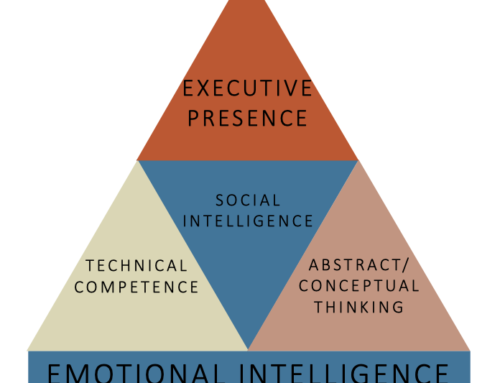 Neglecting your professional development and career growth planning? As a leader in higher education, you spend forty hours or more at work each week devoted to being excellent at your job. You attend to critical tasks, build teams, and execute much-needed changes that ensure that the department or organization you lead thrives.
Neglecting your professional development and career growth planning? As a leader in higher education, you spend forty hours or more at work each week devoted to being excellent at your job. You attend to critical tasks, build teams, and execute much-needed changes that ensure that the department or organization you lead thrives.
You pride yourself on achieving superior results as a leader, but are you neglecting the one thing that will matter most in your career in the years and decades ahead? I’m talking about the time and energy you devote to focusing on your career and professional growth.
It’s July and the year is half gone. Now’s a good time to take a good long look at the career and professional goals you set January. Or, if you didn’t set goals in January, now’s a good time review what you really want for your professional future.
I’ve been an Executive Coach in higher education for more than 20 years, and time and again I see higher education leaders work hard to thrive in their existing roles but neglect the key drivers of their own continued career success and growth.
In this post, I’ll review what you should be doing to ensure you don’t lose sight of the big picture that leads to phenomenal careers. We’ll review both the actual career search process and the professional development required to enhance your credibility and reputation.
Job & Career Search
Whether you’re hoping to make a move immediately or down the road, the search for your next role needs to be a priority today. The seeds you plant now will yield the growth you want tomorrow.
There are three main activities I recommend you take immediately to ensure your next career transition is as fruitful as you want it to be. The first is to begin expanding your network. The second is to create a plan for your next job transition. The third is to invest in professional development and enhance your executive presence; both are required to send your career soaring.
Expand Your Professional Network
You’ve probably heard the adage that what you know is not nearly as important a who you know. There’s more truth to that phrase than most people think.
Creating a strong professional network is key to fueling the career of your dreams. I encourage you to think about what you have you done lately to expand your network. Now, think about what new avenues you could pursue to expand the number and quality of contacts in your network.
For example, if you are in a technical field, you need to be engaged with EDUCAUSE, the largest community of technology, academic industry, and campus leaders advancing the role of information technology in higher education. EDUCAUSE is holding several upcoming events that will help you expand your network while growing your skills.
SIGUCCS is another high-quality association to join if you’re involved in information technology services in your higher education role. I will be conducting a workshop on building executive presence at the SIGUCCS annual conference this fall.
Other professional associations include NACUBO and the American Council on Education.
Whatever your professional niche, it’s important that you join relevant networks and associations where you network with others who can add depth and breadth to your current network.
Also, online networking on LinkedIn and other relevant online networks should not be ignored. Engagement will help establish your credibility and develop a strong professional presence in all forums that are appropriate for area of expertise.
Develop a Job Search/Career Growth Action Plan
Creating a career growth plan complete with target dates for next role you hope to hold is essential to the process of driving your growth as a leader. Your plan should consider the following questions:
Where do you want to be in 18 months?
- What types of career research do you need to do now if you’re not certain where you want to be? (examples: set-up informational interviews, discuss ideas with trusted mentors, etc.)
- What skill gaps could prevent you from achieving what you want, and what will you do to shore up those gaps?
- What concrete steps do you plan to take to achieve the career goals you’ve set for yourself in the next 30, 60, 90 days?? Don’t be vague: create a detailed plan using SMART goals (i.e., specific, actionable, measurable, relevant, and timely).
Once you develop a concrete plan ask for feedback from a trusted mentor or coach.
Professional Development & Executive Presence
As a leader in higher education, you may already have a relatively clear picture of where you need to expand your current skillsets and subject area expertise. What you might be less familiar with is the work you need to do to enhance your executive presence.
At its core, executive presence is about projecting confidence and competence along with a sincere interest in serving others.Executive presence refers to how others see you. You may be exceptionally qualified and have extraordinary skills, and yet if others don’t see you as a strong, credible leader, your career will suffer.
To assure you are perceived as highly respected and competent leader, you must master the three pillars of executive presence, which are:
- Technical Competence – Subject Matter Expertise
- Emotional Intelligence
- Conceptual Thinking Skills
I’ve written extensively on the three pillars of executive presence for higher education leaders, and I invite you to learn more about them here.
Preparing to Handle Critical Conversations
As you undergo future job search initiatives, you’ll also need to be well versed in the four steps to handling critical conversations. The four steps include:
Reflect: Reflection is theact of preparing yourself for what’s ahead, thinking through the outcomes that you want to achieve while also understanding the needs others may have. In short, you need to mentally prepare yourself for the conversation you anticipate.
Plan: Create a plan for how you intend to handle the actual job search conversation/interviewing process where you address your career wants, needs, and goals with the other party/parties involved.
Engage: Engage the person or people you’re conversing with, extending compassion, respect, and an open mind.
Move forward: Formulate a clear, complete vision for what you want to happen next.
The process of applying for and interviewing for your next job can be difficult, emotional, and fraught with uncertainty. Knowing how to use the four-step model to engage in high-stakes conversations will help increase the likelihood that career talks will go your way.
If you’d like to learn more about the four-step model of critical conversations, read my post 4 Steps to Approaching Critical Conversations: A Roadmap for Higher Education Leaders.
Staying on Top of Your Career Growth Tactics
Whether preparing for an immediate job search, envisioning long-range career goals, or focusing on professional development while building your professional presence, there are three simple steps that will help keep you on track:
- Set goals for each stage of your career growth plan.
- Reflect regularly on where you are versus. where you want to be.
- Every week, commit 5-15 minutes to review the following:
- What went well this week?
- What could I have done more of (or less of)?
- What will I do next week to further my career growth plan?
Your career growth isn’t something you should ever take for granted. Being clear about what you want and how you plan to achieve your career goals, and devoting time on a regular basis to attending to careering planning, is key to continued growth throughout your career.
Would you like a fresh perspective on your career trajectory from a seasoned higher education executive coach? Let’s get the conversation started- contact me at dianna@sadlouskos.com.




